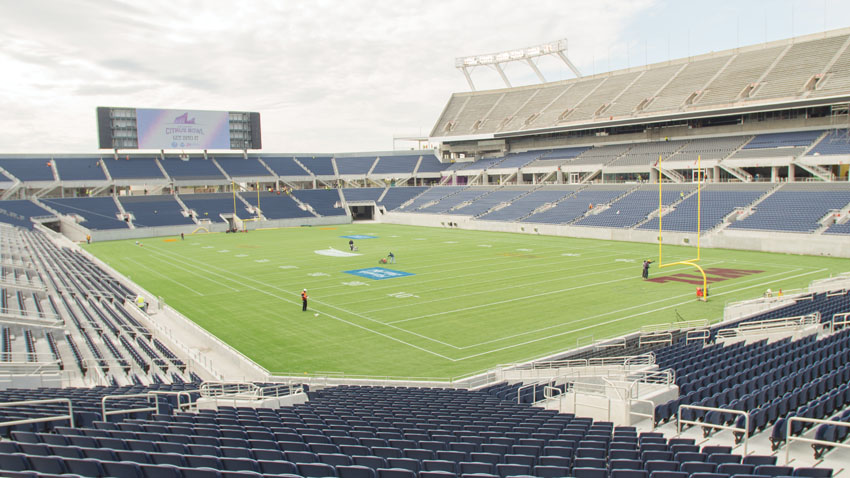Choices Abound for Attractive & Smart Facade Design
A Well-Designed Seam
Large facade materials like stone panels and glass are favorite options for architects, but the details can make or break the final visual appeal of the project. A priority when specifying large monolithic-style facade materials is to appreciate the basic science Mother Nature will demand.
At a minimum, facade designs must incorporate expansion-joint systems to help control the swelling and contraction of materials during temperature changes. Likewise, in seismically active areas, expansion joints are required to help mitigate damage from earthquakes. Failure to plan for the inevitable movement of large facade materials flies in the face of basic building code and will result in cracked materials and the potential for structural failure. In addition, these expansion-joint systems need to also protect the interior from moisture intrusion. While we will look at the importance of incorporating the facade into the building envelope later in this course, for now, let’s consider the aesthetics of specifying expansion-joint systems into building designs
Like the zipper on a coat, expansion-joint systems will extend the entire length of the facade design. This seam may even extend into horizontal surfaces such as decks, walkways, and ceilings if a uniform design for all exposed surfaces is used. For architects looking to “hide” or at least minimize the visual impact of expansion joints, there are several options available. Expansion joints designed for both thermal and seismic applications can be specified with covers that discretely conceal the expansion mechanism hidden below. Covers also are an excellent choice for areas where foot traffic is expected, as the joint covers can allow for a smooth and uninterrupted walking surface.
Compression joints are another style that offers crisp sightlines in areas where there is the potential for more extreme seismic activity. Compression systems incorporate folds of rubber that can be customized in a variety of colors and finishes and flush mounted to either interior applications, like parking garages, or exterior surfaces, like facades. Compression joints are a maintenance-free option that can be neatly installed and offer a minimal visual break in surfaces while providing the building with structural protection.

Photo courtesy of Inpro
Compression joints work exceptionally well in both areas with the potential for extreme seismic activity and open-air structures where temperature changes are expected.
Can You See Clearly Now?
Glass as a primary facade material remains the go-to option for many architects, and unlike projects from the 1990s when highly reflective tinted glass was the trend, the general tendency today is to specify “clear” glass. However, when specifying glass, it is important to understand that to achieve a truly transparent aesthetic, design professionals should know that clear glass is not completely clear—it has a distinct green hue when viewed under light.
Visible light transmittance (VLT) is a measurement of the percentage of available visible light that passes through a glazing material. Glazing VLT ratings can range from 12 percent if glazing is treated with highly reflective coatings to 84 percent on uncoated “clear” glass. But even at 84 percent VLT, a significant amount of visible light is not entering the space.
For applications that require very clear and colorless glass with exceptional light transmission, low-iron glass is a good choice. Low-iron glass is made by selecting raw materials that are naturally low in iron. In addition, the melting process is carefully controlled to ensure the product properties remain consistent. Low-iron glass is also ideal for applications where glass edges are visible or a neutral color is desired.
A double-glazed insulated glass unit (IGU) consists of two glass lites separated by an airspace. Often, design professionals specify a double-glazed IGU with low-iron glass as the exterior lite—typically to achieve greater transparency and color fidelity—and then use clear glass as the interior lite. This compromises the design intent of maximizing daylight and color fidelity, as the green hue that is inherent in clear glass will dilute the clarity of the low-iron glass on the exterior.

Photos courtesy of Vitro Architectural Glass
Even with low-e coatings, low-iron glasses provide a significant improvement in clarity compared to conventional clear glass.
Protecting Buildings from Foul Weather
The dual role of the facade requires the material and installation to create an attractive and engaging visual appearance while playing its part in the building envelope. This role as the first line of defense for the building, especially in climates or areas prone to extreme weather events, requires that architects thoughtfully select materials and installation systems that will add beauty while maintaining building integrity against the onslaught of rain, wind, and temperature.
In addition to weather, energy performance remains a critical aspect when specifying the facade. The facade is part of the building envelope, and as such, it plays an important role in mitigating heat transfer, loss of conditioned air, and durability issues. No matter what the style or material of the facade, basic building science must be employed to ensure the durability, comfort, and safety of occupants.
Notice

www.azonintl.com

www.cascade-architectural.com

www.inpro.com

www.vitroglazings.com/solarban









